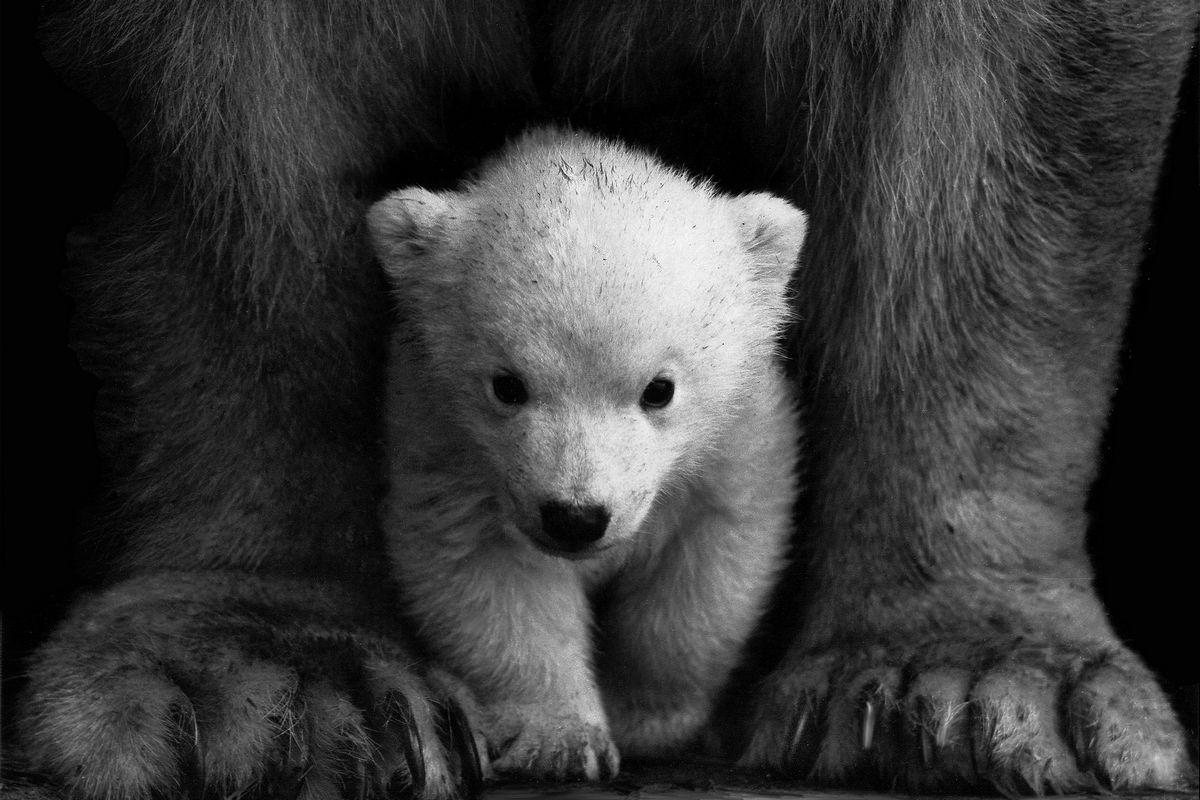In the frigid expanse of the Arctic, a peculiar and alarming phenomenon has been unfolding – polar bears, the majestic rulers of the frozen north, have been increasingly venturing into human settlements. 🏘️ One such incident occurred in 2019 on Novaya Zemlya, a remote Russian island, where over 50 polar bears invaded the town, sending shivers down the spines of residents. 😨
This unusual behavior is a stark reminder of the profound impact climate change is having on these magnificent creatures and their delicate ecosystem. 🌍🌡️ As the Arctic ice melts at an unprecedented rate, the very foundation of the polar bears’ existence is being threatened, forcing them to adapt or perish.
🔍 Unraveling the Polar Bear’s Unique Adaptations
To truly understand the gravity of the situation, we must first delve into the remarkable adaptations that have allowed polar bears to thrive in the harshest of environments. 🧊 Their transparent, hollow fur acts as a natural insulator, trapping warmth while allowing sunlight to reach their black skin, enabling efficient heat absorption. 🔆 Their thick layer of subcutaneous fat, measuring up to 10 centimeters, further insulates them from the biting cold.
These adaptations have enabled polar bears to roam the Arctic with ease, even in temperatures plummeting to -50°C (-58°F). 🥶 Their keen sense of smell can detect seals over a kilometer away, hidden beneath the snow, making them formidable hunters. 🦭 The intricate dance between polar bears and their primary prey, the ringed seal, is a testament to the delicate balance of the Arctic ecosystem.
Ringed seals, with their unique ability to construct snow lairs, provide polar bears with a reliable source of sustenance throughout the harsh winter months. 🌨️ The bears employ ingenious tactics, such as patiently waiting by breathing holes or smashing through the snow lairs with their powerful paws, to capture these elusive prey.
However, the rapidly melting Arctic ice is disrupting the delicate balance that polar bears have mastered over millennia. 😟 As the sea ice retreats earlier each year and reforms later, the window for hunting seals narrows drastically. This scarcity of food has forced polar bears to resort to desperate measures, scavenging for scraps in human settlements and even resorting to cannibalism in extreme cases. 🗑️
🌊 The Melting Arctic: A Harsh Reality and Its Ripple Effects
The heartbreaking accounts of emaciated polar bears struggling to survive, climbing treacherous cliffs in search of bird eggs, or drowning during lengthy swims in search of ice, paint a grim picture of the challenges they face. 💔 One particularly poignant case was that of a polar bear named Bacom, whose futile attempts to open a trash can in search of food went viral, capturing the world’s attention and highlighting the dire consequences of a rapidly changing Arctic.
But the impact of melting Arctic ice extends far beyond the plight of polar bears. 🌍 The Arctic region plays a crucial role in regulating the Earth’s climate, acting as a vital heat sink and reflecting a significant portion of the Sun’s radiation back into space. As the ice melts, this reflective ability diminishes, leading to increased heat absorption and further exacerbating global warming. 🔥
Moreover, the Arctic is home to numerous indigenous communities whose way of life and cultural heritage are inextricably linked to the frozen landscape. 🏕️ As the ice disappears, these communities face unprecedented challenges, from disrupted hunting and fishing practices to the erosion of their traditional knowledge systems.
🌳 A Call for Action: Protecting the Arctic’s Guardians
The plight of polar bears serves as a poignant reminder of the urgent need to address climate change and protect the Arctic ecosystem. 🌎 While individual efforts to reduce carbon footprints are commendable, collective action on a global scale is imperative. Governments, industries, and communities must unite to implement sustainable practices, invest in renewable energy sources, and promote conservation efforts. 💚
By safeguarding the Arctic’s delicate balance, we can secure a future not only for polar bears but also for countless other species that call this region home, as well as the indigenous communities whose lives are intertwined with the Arctic’s fate. 🌳 Failure to act swiftly and decisively will have far-reaching consequences, not only for the Arctic but for the entire planet.
Scientists are working tirelessly to understand the complex dynamics of the Arctic ecosystem and the impact of climate change. 👩🔬 One remarkable discovery involves a gene mutation in polar bears, known as APOB, which may hold insights into preventing cardiovascular diseases in humans. This highlights the importance of protecting these animals, as their genetic diversity could hold invaluable solutions for human health and well-being. 💊
Furthermore, the plight of polar bears has ignited a global movement, with organizations and individuals rallying to raise awareness and support conservation efforts. 🌍 From educational campaigns to sustainable tourism initiatives, these efforts aim to inspire action and foster a deeper appreciation for the fragile beauty of the Arctic region.
The time to act is now, before these majestic creatures become mere remnants of a bygone era. 🐻❄️🌍 By embracing a collective responsibility towards our planet, we can ensure that future generations will have the opportunity to witness the awe-inspiring sight of polar bears thriving in their natural habitat, rather than recounting tales of their tragic demise.
Copyright © 2025 Hea1th.net

